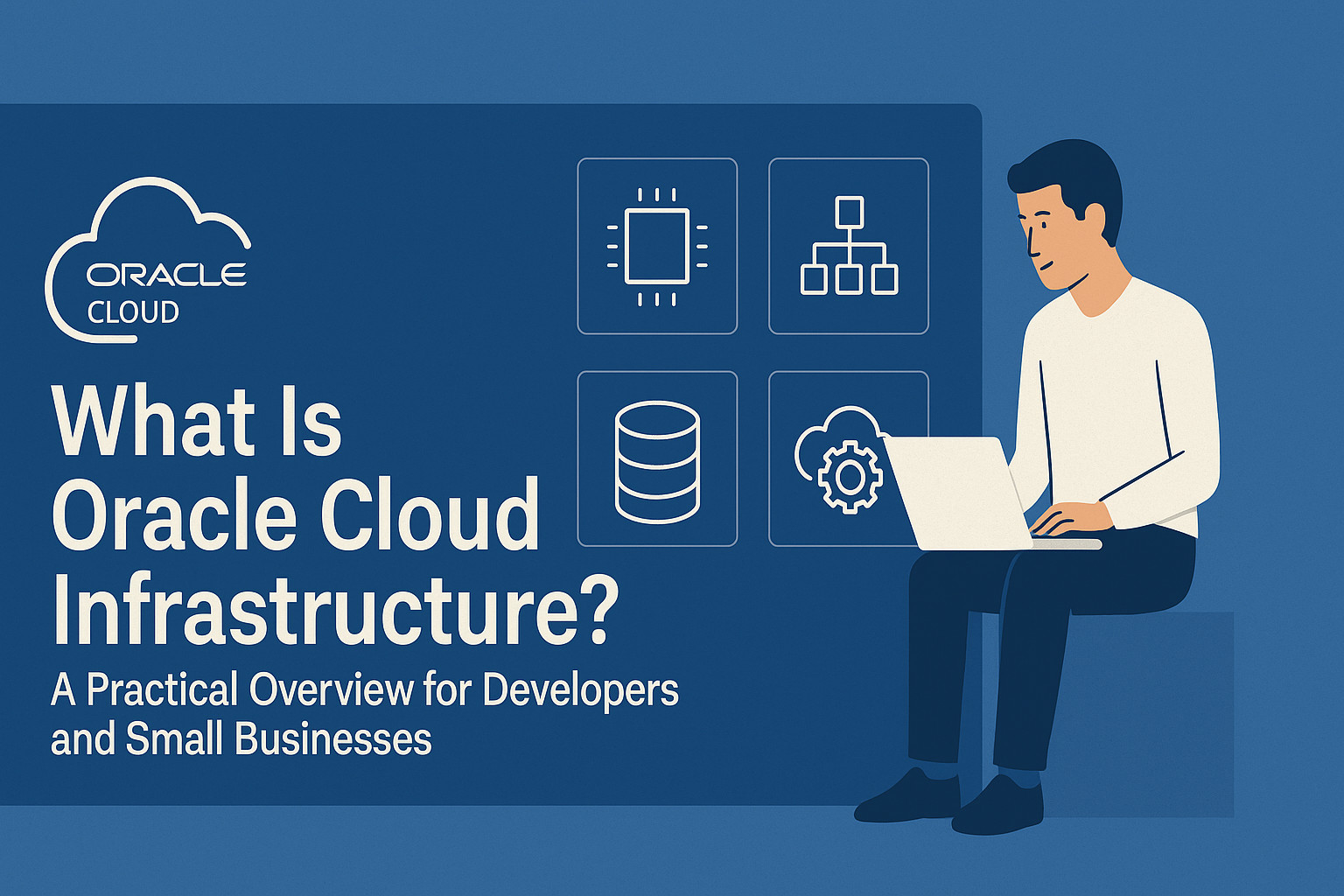What Is Oracle Cloud Infrastructure? A Practical Overview for Developers and Small Businesses
Cloud computing is the backbone of modern digital operations. Whether you’re a developer building the next SaaS application or a small business migrating internal systems, understanding your cloud platform is the first step toward reliability and cost control. This article explains what Oracle Cloud Infrastructure (OCI) is, how it’s built, and how its regional structure supports performance and resiliency.
1. What Is Oracle Cloud Infrastructure (OCI)?
Oracle Cloud Infrastructure (OCI) is Oracle’s second-generation cloud platform providing:
- Infrastructure-as-a-Service (IaaS): compute, networking, storage, load balancers.
- Platform-as-a-Service (PaaS): managed databases, AI/ML, analytics, application services.
- Data-as-a-Service (DaaS): data platforms and insights.
OCI emphasizes isolation by default, consistent performance (reduced noisy-neighbor effects), and transparent pricing, giving developers control and small businesses secure, cost-efficient hosting.
2. How OCI Is Built
- Isolation by default: Every customer (tenancy) operates in an isolated environment for compute, network, and storage.
- High performance & low latency: Flat, high-bandwidth networks optimized for databases and transaction-heavy apps.
- Predictable pricing: Consistent pricing across regions, with generous egress allowances.
3. Regions, Availability Domains, and Fault Domains
Regions
A region is a geographic location (e.g., us-ashburn-1) hosting OCI services. Choose regions close to users for latency and compliance.
Availability Domains (ADs)
Each region includes one or more availability domains—independent data centers with separate power, cooling, and networking. Deploy across ADs for high availability.
Fault Domains (FDs)
Within an AD, fault domains group hardware to provide rack-level anti-affinity. Spread instances across FDs to reduce blast radius of localized failures.
4. Realms and Sovereign Regions
Realms are collections of regions that share governance and security boundaries:
- Commercial Realm: standard public regions.
- Government Realm: compliance-focused public sector regions.
- Sovereign Clouds: country/region-specific data sovereignty.
5. Why This Structure Matters
- Performance: Pick a nearby region to minimize latency.
- Resilience: Distribute across ADs/FDs for uptime.
- Compliance: Honor data residency requirements.
- Cost: Consistent regional pricing helps planning.
Example: A web invoicing app runs frontend across AD-1 and AD-2 with a regional load balancer; the database stays private—achieving uptime and compliance on a modest budget.
6. Getting Started
Your tenancy starts in a home region. Enable additional regions from the Console, then create compartments, design a Virtual Cloud Network (VCN), and deploy compute and databases. Subsequent posts in this series dive into these steps.
7. Summary
OCI’s architecture—regions → availability domains → fault domains—provides global reach, high availability, and predictable performance. Understanding these building blocks helps you deploy smarter and save money as your cloud footprint grows.


